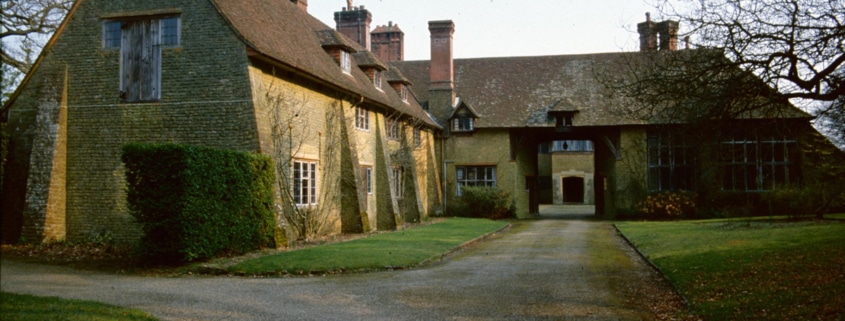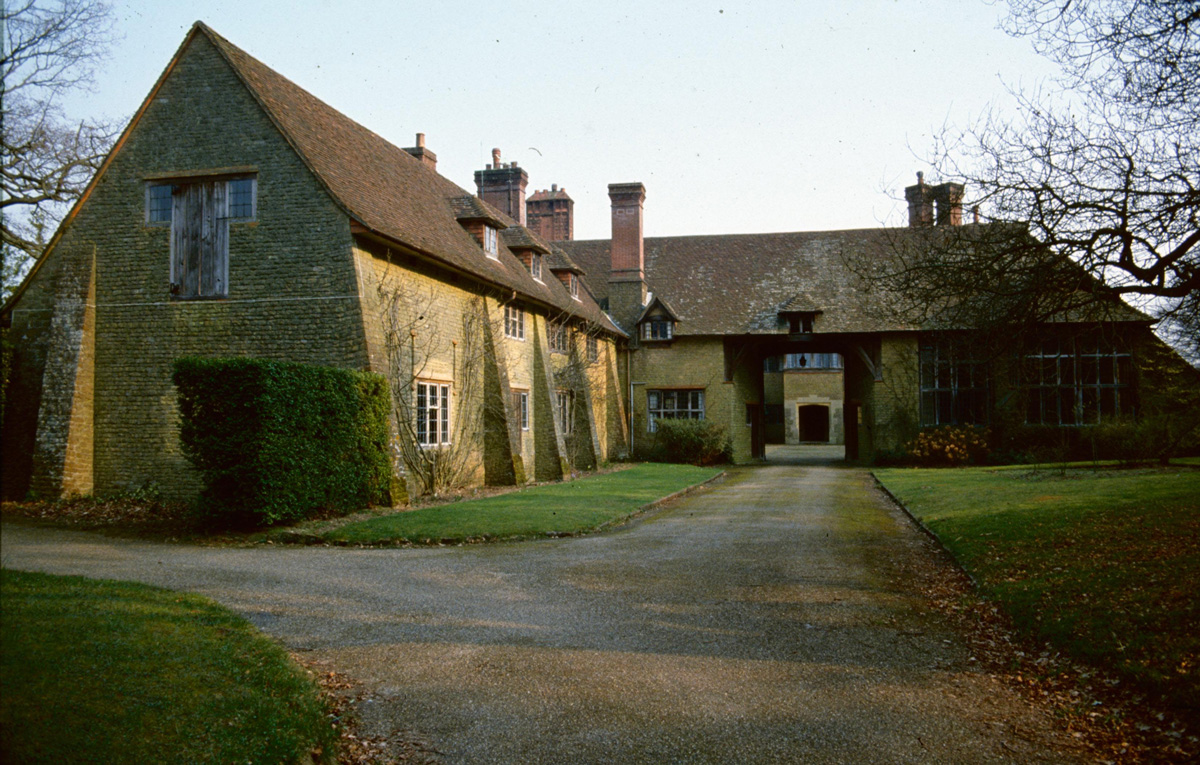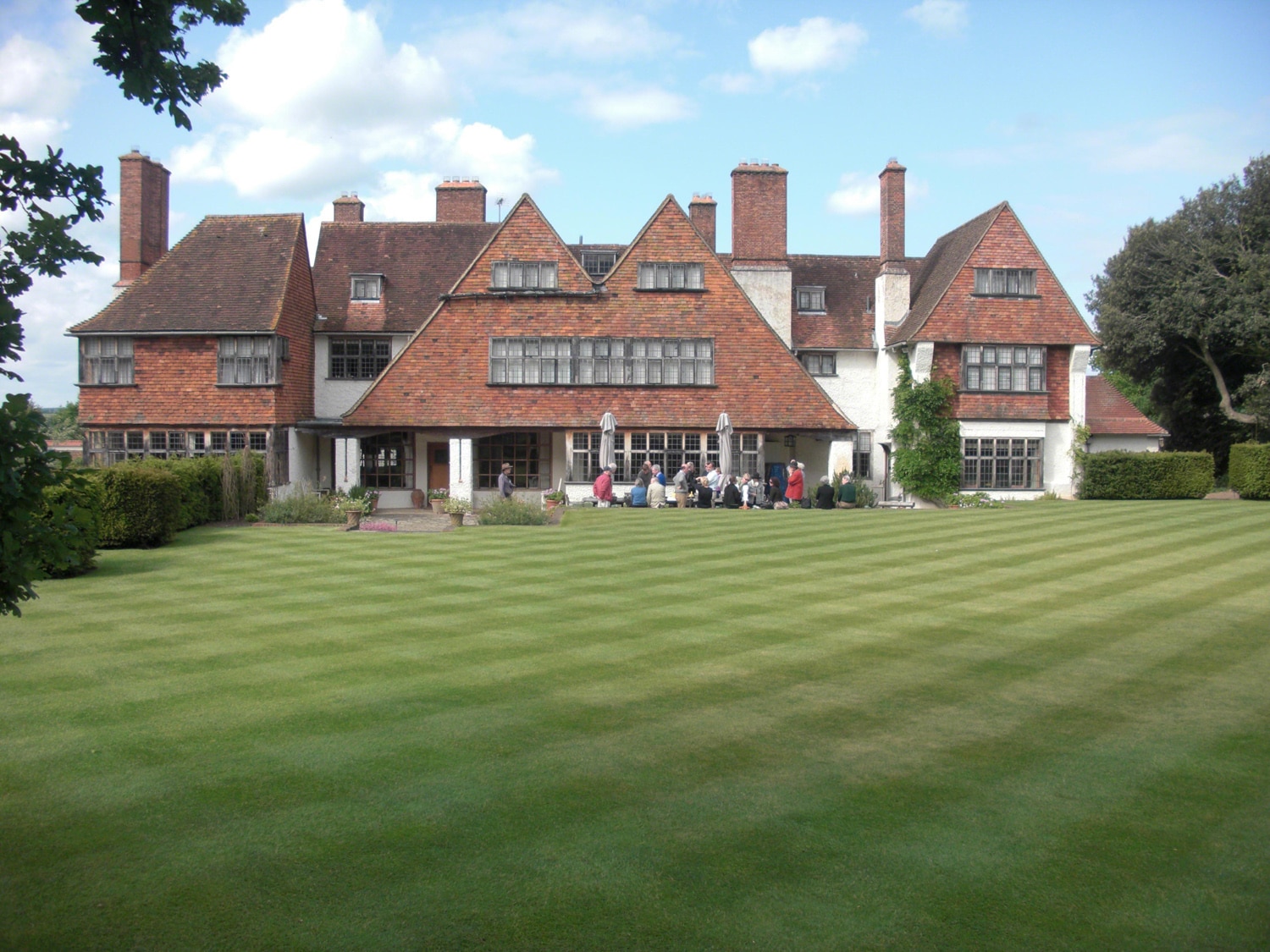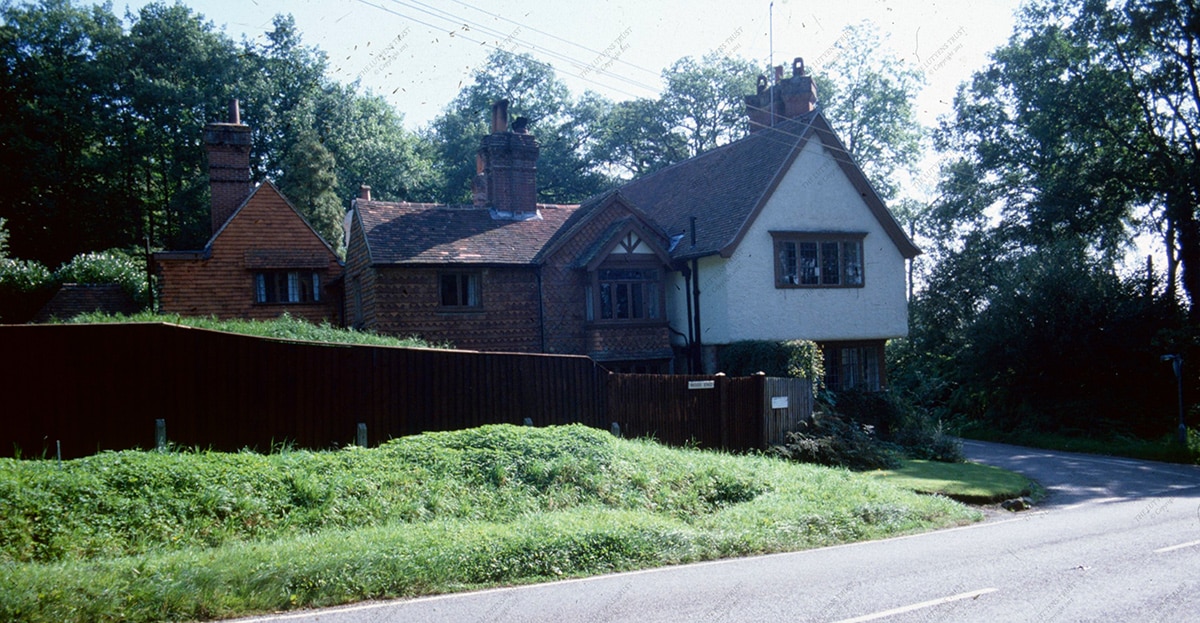
Description
Julia Chance was an amateur artist and sister of St. Loe Strachey, editor of The Spectator. The Chances first commissioned Halsey Ricardo, but became dissatisfied when they happened to call on Miss Jekyll in the spring of 1897 and saw Munstead Wood. They dismissed Ricardo and offered the commission to Lutyens. For Lutyens it was the climax of his early career and he described his excitement in a letter to Lady Emily (May 27, 1897).Orchards, although designed in the middle of a hectic year of 1897 at the same time as such eccentric designs as Fulbrook and Berrydown, is by contrast ‘a good simple building without bombastic pretension’ (Lutyens to Lady Emily, June 2, 1897). It continues the theme of Munstead Wood and the impression is of a Surrey manor farmhouse. It is not a large house but seems so by the rambling nature of its plan, the different elements being grouped around a quadrangular courtyard. Daniel O’Neill notes the greater emphasis on abstract composition: ‘the plain wall of stable block, relieved by massive battered buttresses, the big square opening in the entrance wall and the huge bay window, all contained by the continuous eaves line’. Another theme is the texture of materials – Bargate stone, oak and tile, as at Munstead Wood – achieved by the same builders, Underwood and Herbert. Gertrude Jekyll also planted the garden. Lutyens’s confidence can be seen in one of his first architectural jokes, the dormer above the entrance arch, which lights nothing by open roof beams. An odd feature is that none of the main rooms look out onto the marvellous view to the East, and it is interesting that in many Lutyens houses, Munstead Wood and Goddards, for example, one cannot see out of the windows when seated. Possibly the concept of the ‘view’ and ‘picture’ windows is something that belongs to the later 20th century. (Amery et al, 1981, Cat no. 86) Back to Munstead House, and ½ m. NE up Munstead Heath Road is ORCHARDS,* 1897–1900, one of Lutyens’s very best houses, of the same miraculous flowering into maturity that in Surrey produced Tigbourne Court and parts of Crooksbury and Fulbrook (pp. 749, 233 and 349), and elsewhere The Deanery, Sonning, Berks., and Little Thakeham, West Sussex. He carried out many minor alterations in 1909 and again in 1914, all for William Chance and his artist wife, Julia (Strachey), who had engaged Lutyens after visiting Munstead Wood; designs commissioned from Halsey Ricardo were dismissed.
In most of the houses Lutyens was obsessed or dominated by a spatial idea, as Soane was obsessed with top lighting or, in another medium, Michelangelo with the Pietà. The idea is that of an immensely sophisticated entrance approach, deliberately calculated from the moment one turns into the drive, and an inner kernel of space, a courtyard or quadrangle, using the same motifs and sophisticated balance for the benefit of a static observer as the entrance does for a moving one. In Crooksbury and Munstead Wood the two experiences are separate; at Orchards they are linked. Orchards is a quadrangular courtyard (the spatial kernel, 60 ft (18 metres) square) with one side prolonged to the NE to form an L-shaped entrance, the two linked by a big archway. The visitor sees first the gabled end of an almost windowless creeper-covered block with battered buttresses. This is the prolongation of one of the sides of the courtyard, and leads the eye on to the entrance side of the quad and beyond, through the big archway running the whole height of the wall, to the simple gabled entrance porch. Characteristically, Lutyens has had fun here, putting in a dormer above the arch where it lights nothing but the roof beams, which are open to the ground anyway. The walls either side are angled outwards to narrow the passage, with originally a parlour on the l. and Julia Chance’s studio to the r.
The sensation of walking through to the quad, which lies beyond, is like entering a fairy palace with a union of buildings, exterior space and landscape as miraculous in its way as anything the Baroque produced in uniting buildings, interior space and painted decoration. The quad itself has a low cloister on the r. with wide open semicircular arches – linking the house with the studio – and a tall blank service wing on the l., with just one battered buttress to carry through the effect of the buttresses outside. Straight ahead is the main part of the house, a central two-storey porch of half-timbered gable above a strip of windows that continue without interruption all along the top of the wall under the eaves, and four chimneys high up on the roof to the l. balancing two lower down on the r., one of Lutyens’s very best compositions.
It is perhaps no wonder that after this the outside elevations of the house are an anticlimax, and the mind accepts this quite naturally, as it accepts the flaccid inner courtyards of Caserta after having experienced the terrific single-minded experience of the 2-m.-long canal with the house towering up above the plain at the end of it: it is almost a psychological necessity. The S front is patently the back of the courtyard composition – almost like going to the back of a stage – and the elements do not balance. The gable is off-centre, in the manner of a cross-wing to the long wing on its r. side (cf. Sullingstead, Hascombe, 1896–7), brought to the ground by clasping, sloping buttresses; the windows in the gable an inverted stepped formation. Visually distinct, and slightly set back, a double-gabled part with tile-hanging continued across its valley, mostly containing the study. The E front starts at the corner with the dining room loggia, and then to the N of the gable-end a carefully ordered composition of a pair of double-diamond chimneys clasping a window between them at first floor; the rooms of the service wing below are kept discreetly single-storeyed, hidden from the rest of the garden by a high hedge. But the eye hardly bothers about it, swinging E away from the house in a staggeringly unexpected view – for these closely wooded surroundings – across 5 miles of country to the North Downs.
Inside, the first appearance of what became a familiar Lutyens plan: a corridor running E–W behind the door to stairs at one end and to each of the rooms of the garden front. These rooms were much altered in 1939, when the dining room was stripped of panelling and thrown into one room with the drawing room (or hall). Subdivision was threatened in the 1980s but the house was kept intact and carefully restored by Frances & Michael Edwards. Only two things need special notice: the very pretty FIREPLACE in the drawing room, with blue and white tiles of cats and a plan of the house, all designed by Julia Chance – a case of the amateur doing better than the professional of the time could; and the STAIRCASE, which is the normal small manor-house type with newel posts and a small well. It is C17 in style, but with two delightful touches: one, that the space between the supporting joists of the top treads is left open, so that the riser has gaps in it, tying the two levels together spatially; the other, that halfway up, a small staircase of ten steps starts off waywardly at right angles to its own landing and corridor. Both of these motifs of course had been introduced at Munstead Wood (see above) and would reappear many times more in later houses. The other remarkable feature is the gigantic fireplace in the studio, a high open-roofed barn. It is in bright red brick, nearly 20 ft (6 metres) high, with niches inlaid with roofing tiles.
The gardens were laid out by Jekyll. Of particular interest is the DUTCH GARDEN below the SE corner, completed in the early 1900s, of stone and herringbone brickwork and semicircular steps and seats. Lawn below with a wall ending a typical Lutyens arch to the large kitchen garden.
* It was not possible to revisit Orchards for this edition. The description is therefore Ian Nairn’s of 1962 with additional information by Nicholas Taylor and revisions based on photographic and published descriptions. (O’Brien et al., 2022, pp.536-8)
Bibliography
Amery, C., Richardson, M. and Stamp, G. (1981) Lutyens, the Work of the English Architect Sir Edwin Lutyens (1869-1944): Hayward Gallery London, 18 November 1981-31 January 1982. London: Arts Council of Great Britain.O’Brien, C., Nairn, I. and Cherry, B. (2022) Surrey. Pevsner Architectural Guides: Buildings of England. New Haven: Yale University Press.
Also Cited In
Nairn, I., Pevsner, N. (1971) Surrey (Pevsner Architectural Guides: Buildings of England). 2nd edn. Yale University Press.Inskip, P. (1986) Edwin Lutyens: Architectural Monographs 6. 2nd edn. London: Academy Editions.
T, 1908. COUNTRY HOMES GARDENS OLD & NEW: ORCHARDS, SURREY, THE RESIDENCE OF SIR WILLIAM CHANCE, Bart. Country Life (Archive : 1901 – 2005), 23(588), pp. 522-530.
JEKYLL, G., 1901. COUNTRY HOMES GARDENS OLD & NEW: ORCHARDS, SURREY, . . . THE RESIDENCE OF MR. WILLIAM CHANCE. Country Life (Archive : 1901 – 2005), 10(243), pp. 272-279.
Listing Grade
II*,II,IListing Reference
1001174 1253513 1378318Client
Sir William Chance, Bt


